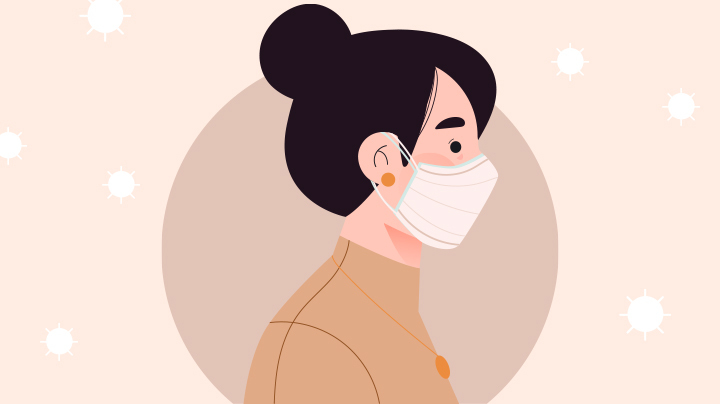This face mask helps reduce acne!
May 22, 2023

While the economy is slowly opening up and Filipinos are starting to get a semblance of pre-pandemic life again, the COVID-19 virus is still very much at large and remains a grave threat to our health. Especially if we consider the recent news about the spike in cases, what with the new South African variant fast spreading in Metro Manila.
We’re pretty much used to the standard health protocols by now: the wearing of face masks and face shields, frequent handwashing, along with the observance of proper social distancing. But given the new uptick in cases, surely there’s something more we can do to stay safe from coronavirus.
Many medical professionals are actually advocating what they call “double masking” to boost our protection from COVID-19. How exactly does this work, and what do we need to know?
Double masking, quite literally, is the wearing of two face masks on top of each other. But not just any regular face masks. According to the U.S. Centers for Disease Control and Prevention (CDC), double masking is when you wear a cloth mask over a “medical procedure mask,” otherwise known as a surgical mask.
What differentiates a cloth or washable face mask from a surgical mask is that a surgical mask is made up of three layers of synthetic non-woven materials and it has a filtration layer in the middle. While respirators or filtering facepiece respirators (FFPs) are also a kind of medical mask, it is not as advisable to use as a non-FFP mask because those with exhalation valves can potentially make it possible for a virus to get through, and obviously we don’t want to risk that.
In a series of lab tests, it was confirmed that double-masking reduced the exposure to “potentially infectious aerosols” by as much as 95 percent.
There were three kinds of mask combinations that were tested for their ability to block particles from a cough: a three-ply surgical mask blocked 42 percent of the particles, a three-ply cloth face mask blocked 44 percent of the particles, while a cloth mask over a surgical mask blocked as much as 95 percent of the particles. Then again, the study also noted that doing the latter could also make it harder to breathe or block the wearer’s peripheral view.
What’s clear is that it’s also possible to keep the same level of protection with just a single surgical mask, but the ear loops have to be knotted and the sides close to the face must be tucked in to close any openings. Basically the more snug the fit, the better. That means you don’t feel any openings around the edges of the mask on your nose, your cheeks, or your chin.
The bigger question is do we really need to start double-masking? It’s really up to you. If you can ensure that you can breathe properly and comfortably while double-masking, then by all means, do it and double your protection.
But if it will only impair your breathing and lead you to remove the mask more often—or worse, not mask up at all because of the discomfort—epidemiologist Saskia Popescu says she’d rather people invest in one quality face mask that “meets the mark” in terms of filtration of particles, secure fit, breathability, and no openings. Everybody’s face shape will be different, too, so there is no “one size fits all” solution.
Find the right mask (or masks), mask up, follow health protocols to a tee, and stay safe!
Most Popular
The Belo Glow Holiday Guide: Your Quick, Chic, and Camera-Ready Glow Plan